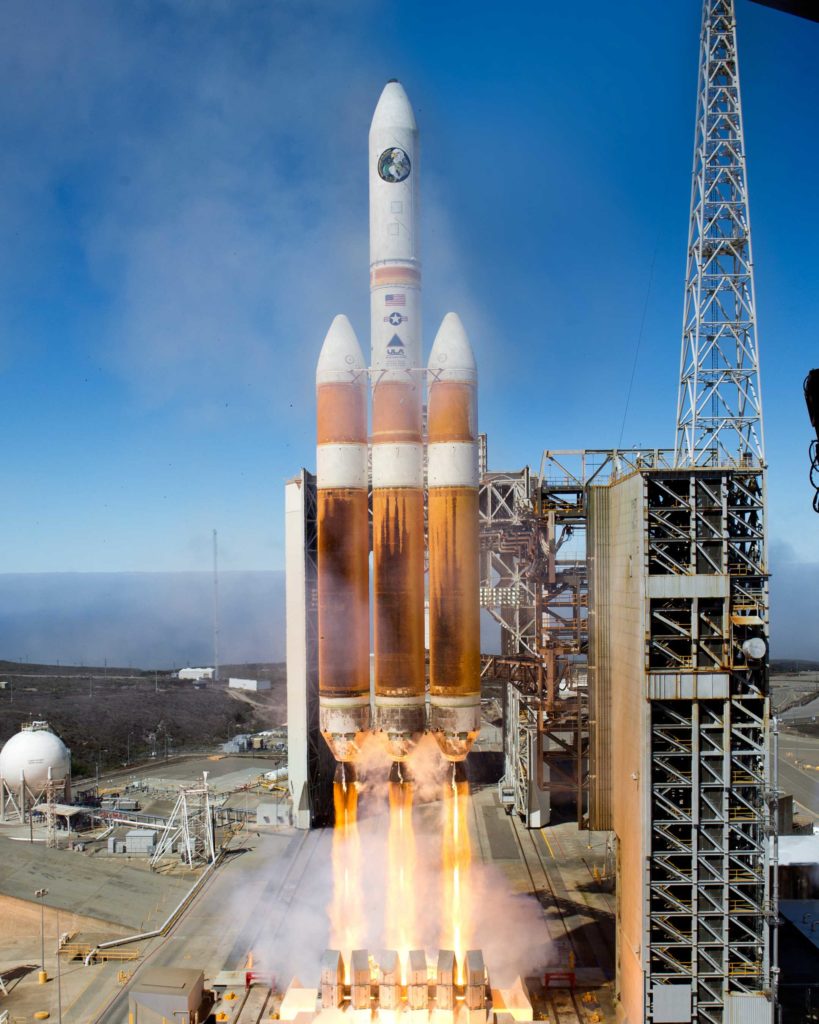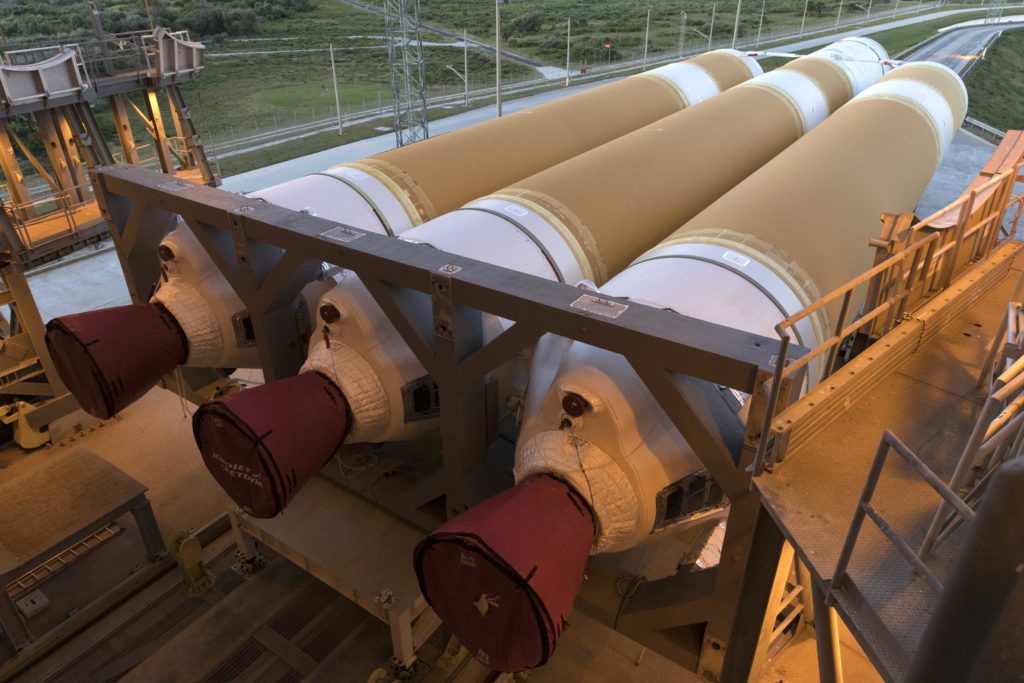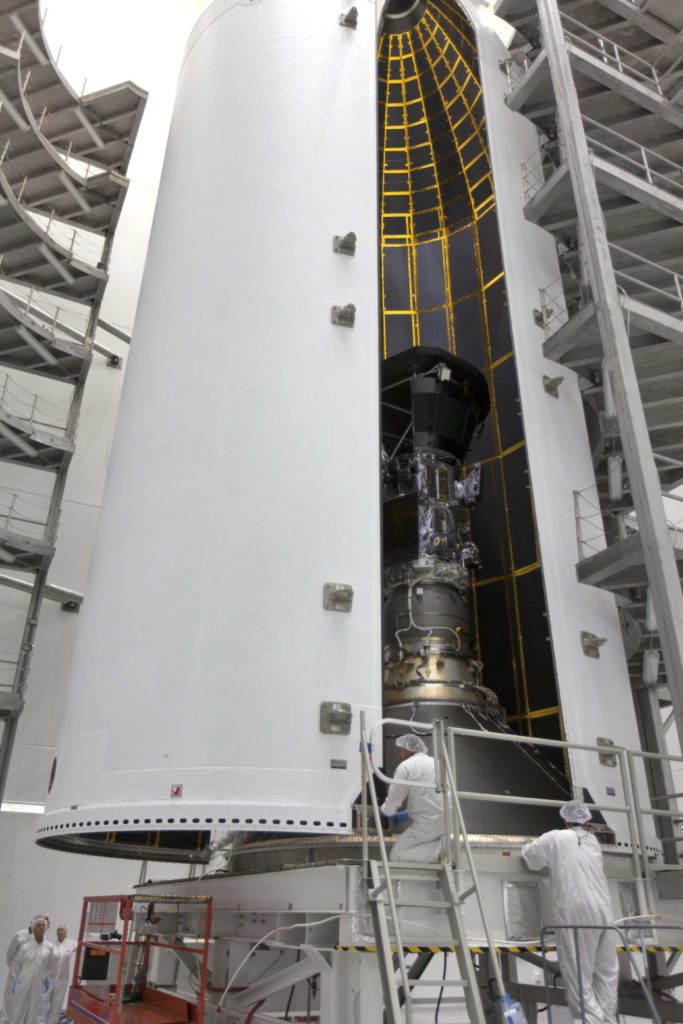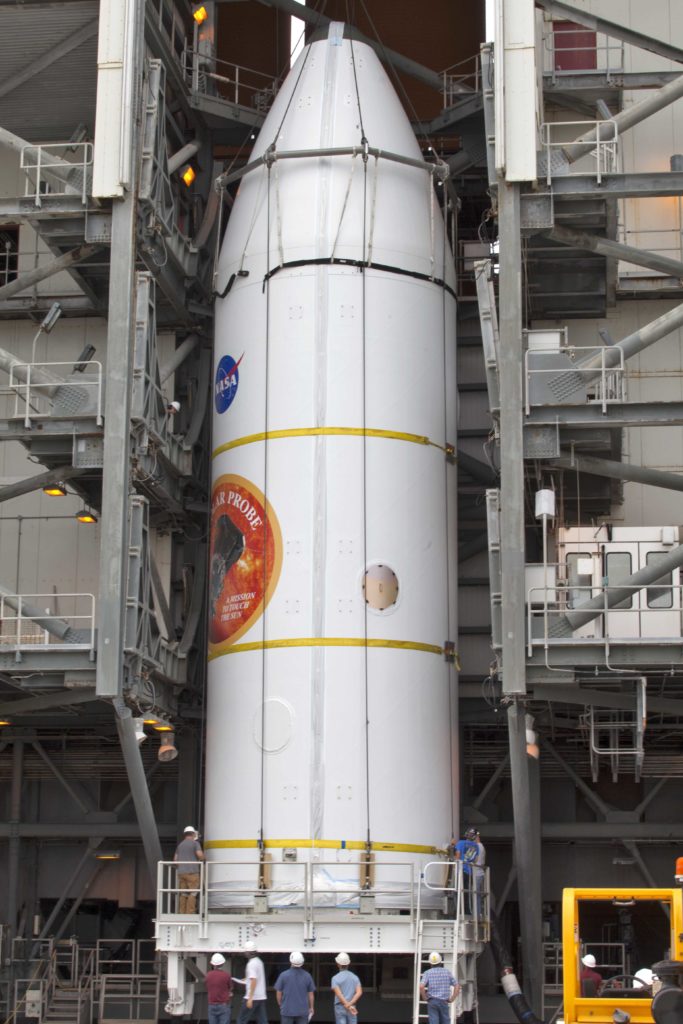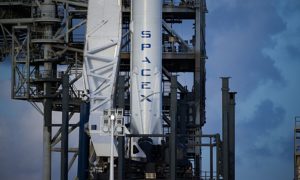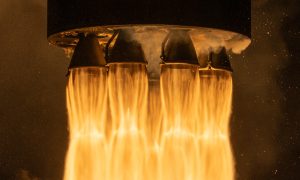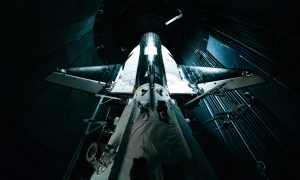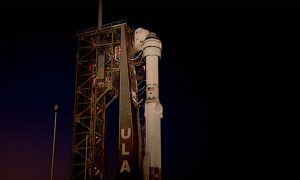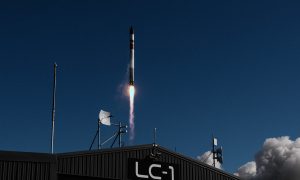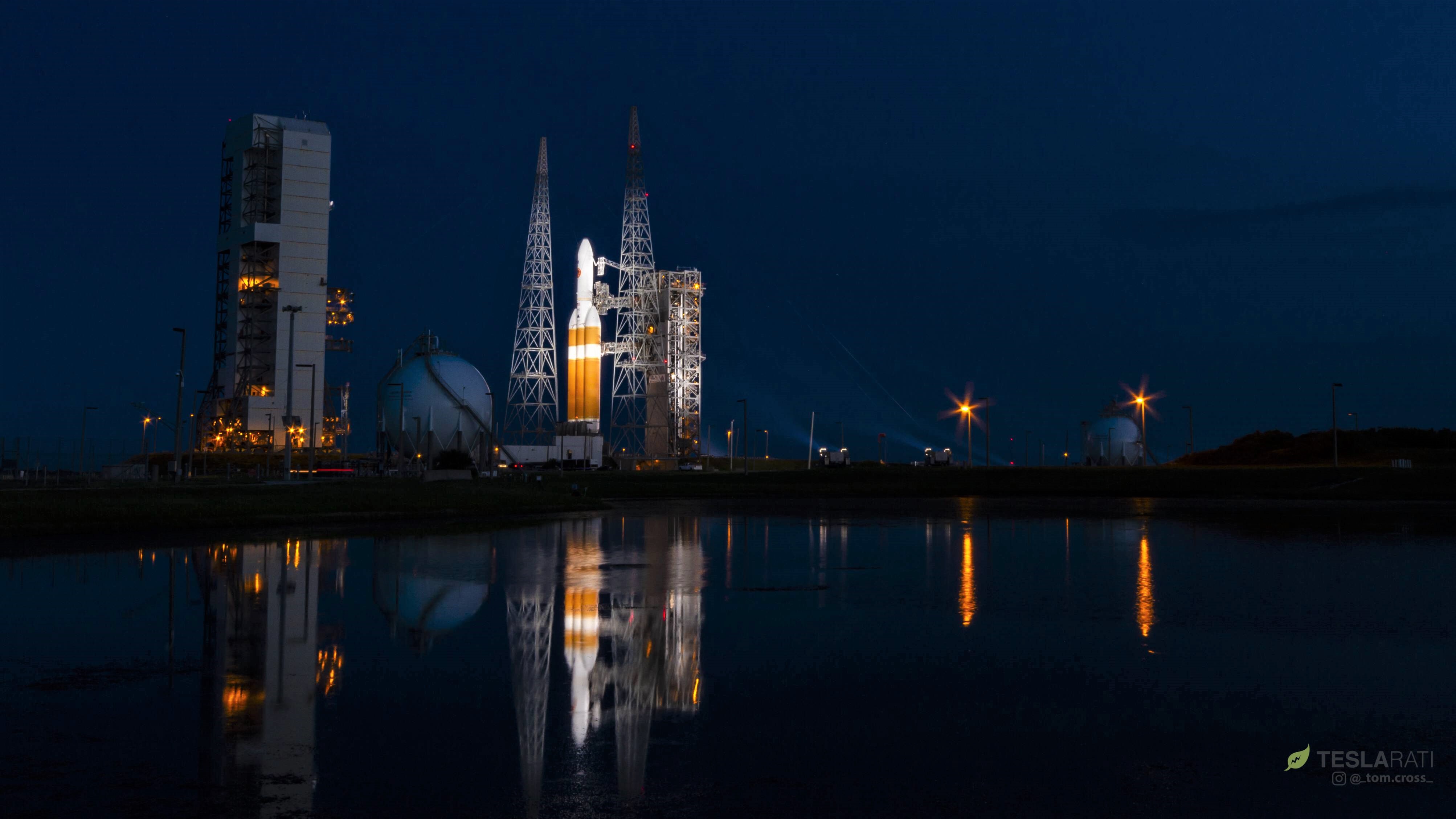

News
NASA spacecraft ready for voyage to the Sun on SpaceX competitor’s biggest rocket (Update)
Update: Issues with rocket and ground support hardware ran down the August 11 launch window. ULA scrubbed the attempt and has recycled the launch to August 12, 3:31 am EDT/07:31 UTC. The second attempt will again be streamed by NASA TV.
#DeltaIV Parker #SolarProbe launch is planned for Sunday, Aug. 12, from Space Launch Complex-37 at Cape Canaveral Air Force Station. The forecast shows a 60 percent chance of favorable weather conditions for launch. The launch time is 3:31 a.m. ET. https://t.co/IUd13yZFEx
— ULA (@ulalaunch) August 11, 2018
Teslarati photographer Tom Cross is on the ground in Cape Canaveral, Florida ahead of what will most certainly be a spectacular launch of NASA’s sun-bound Parker Solar Probe atop SpaceX competitor ULA’s (United Launch Alliance) Delta IV Heavy, the world’s second most powerful operational rocket.
https://twitter.com/_TomCross_/status/1028082435936997376
Second only to SpaceX’s recently-debuted Falcon Heavy rocket, the Delta IV Heavy (DIVH) is a massive beast of a launch vehicle made up of three single-engine boosters that produce more than 2.1 million pounds of thrust at liftoff. As a side-effect of the rocket’s liquid hydrogen and oxygen fuel choice, DIVH’s booster bodies are a solid 5 meters in diameter (40% wider than Falcon 9) to account for the fact that hydrogen is far less energy-dense than kerosene (Falcon 9’s fuel of choice).
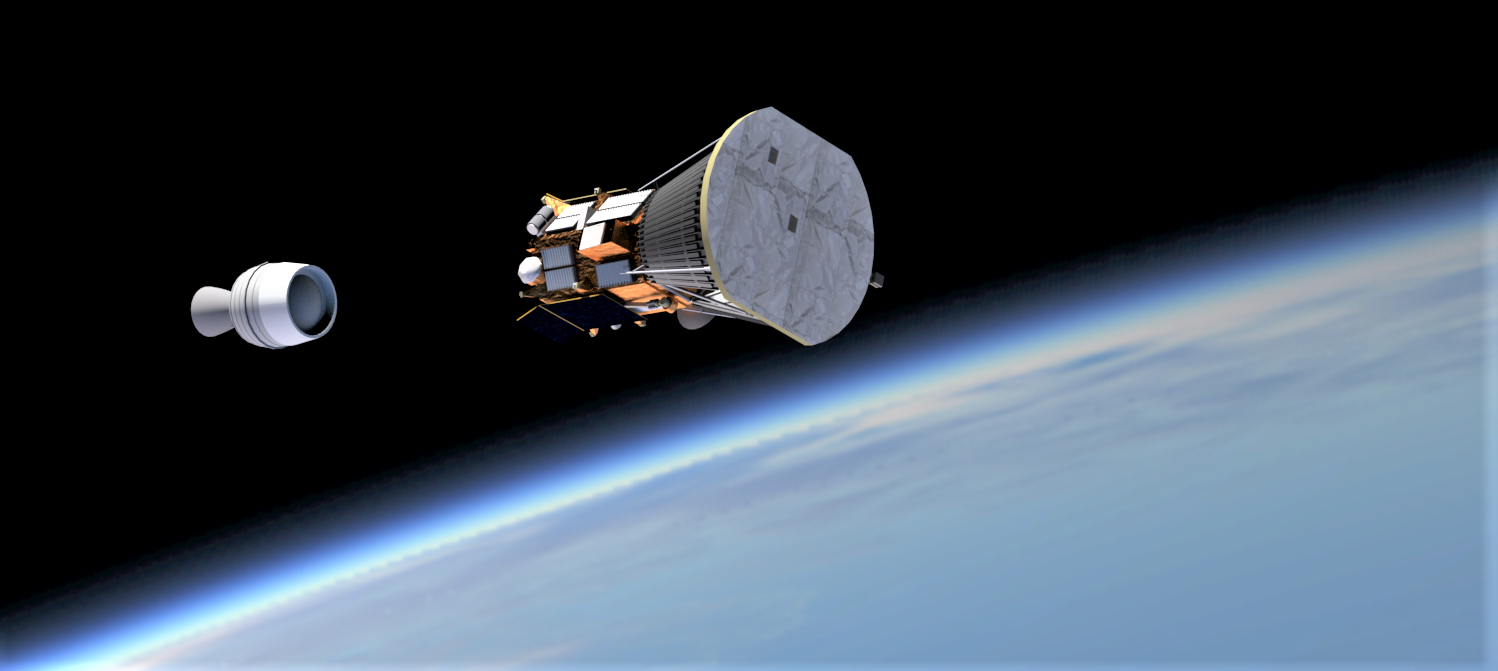
The launch of NASA’s Parker Solar Probe (PSP) will be Delta Heavy’s 10th launch since it first debuted in 2004, giving a taste for how infrequently the rocket typically launches – averaging less than once a year. The target of Parker Solar Probe’s mission happens to be the Sun itself, more specifically the dispersed aura of plasma (superheated gas) – known as the solar corona – that surrounds it.
In pursuit of “touching the surface of the sun”, PSP will wind up becoming the fastest human-made object in history, reaching velocities upwards of 200 km/s (120 mi/s) at a distance from the sun of just 6 million km (3.7 million mi). At that unfathomable speed, Parker Solar Probe would travel from Los Angeles to Manhattan in 20 seconds.
- Delta IV Heavy seen launching a classified NRO payload in 2013. (ULA)
- The first stage of Parker Solar Probe’s Delta IV Heavy rocket prepares to be lifted vertical. (ULA)
- Parker Solar Probe is encapsulated inside Delta IV Heavy’s payload fairing ahead of launch. (NASA)
- Encapsulated in its payload fairing, Parker Solar Probe is craned atop Delta IV Heavy in a process known as vertical integration. (NASA)
That close to the sun, the temperatures PSP will be subjected to are extraordinary, thanks to the fact that sunlight will be a full 500 times more powerful than the light that reaches us humans on and around Earth. To survive temperatures as high as high as 1,377℃ (2,500°F) and keep its highly-sensitive scientific instruments and spacecraft bits at a more reasonable 29.4℃ (85°F), PSP will bring along a heat shield just big enough for the craft to hide behind.
ULA’s Delta IV Heavy is currently scheduled to launch NASA’s Parker Solar Probe from Cape Canaveral at 12:33 am PDT/3:33 am EDT/07:33 UTC. Follow along in real-time with NASA TV’s live coverage of the launch and stay tuned for photos from Teslarati photographer Tom Cross’ remote cameras.
For prompt updates, on-the-ground perspectives, and unique glimpses of SpaceX’s rocket recovery fleet (including fairing catcher Mr Steven) check out our brand new LaunchPad and LandingZone newsletters!
News
Tesla sales soar in Norway with new Model Y leading the charge
Tesla recorded a 54% year-over-year jump in new vehicle registrations in June.
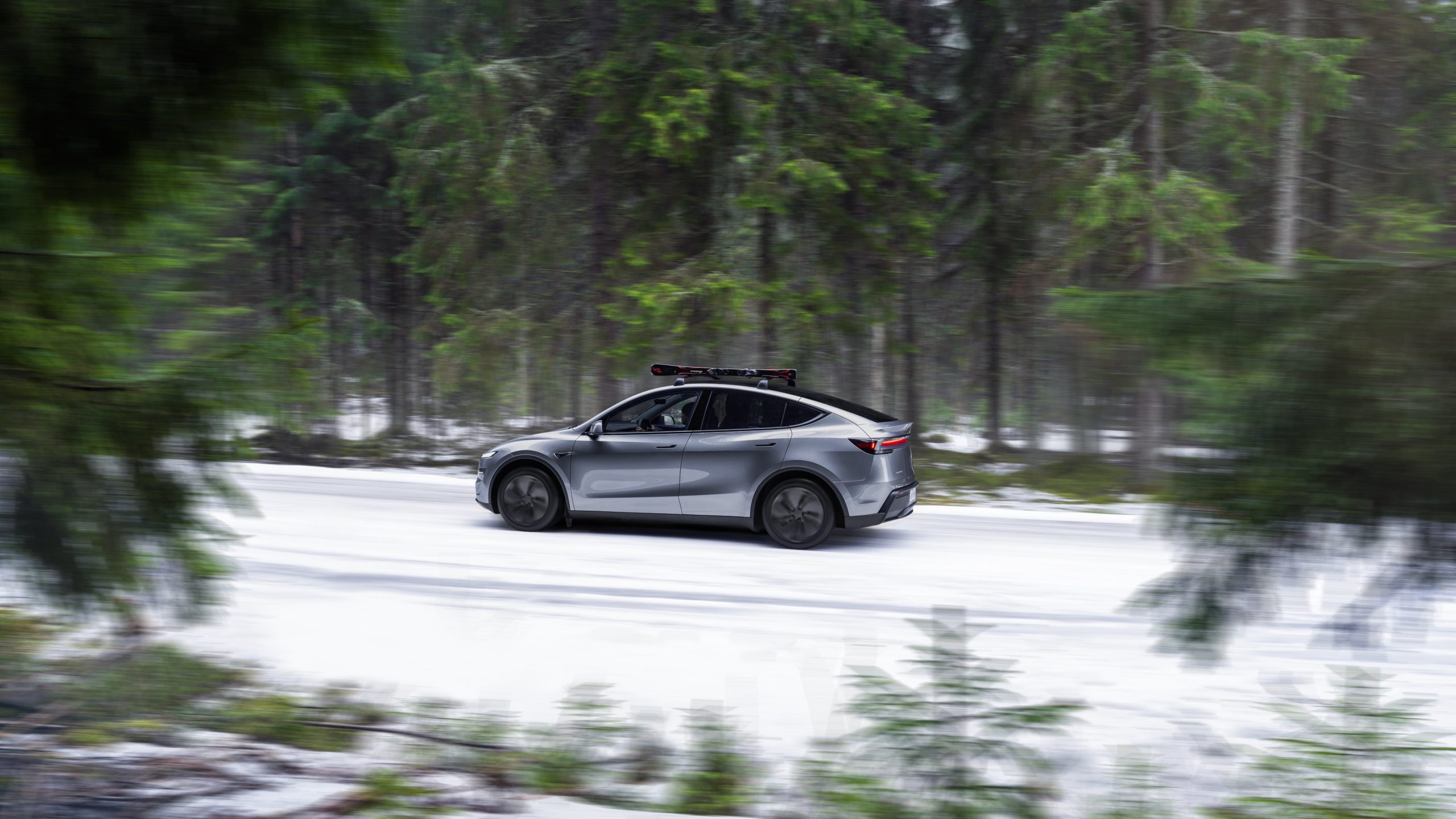
Tesla is seeing strong momentum in Norway, with sales of the new Model Y helping the company maintain dominance in one of the world’s most electric vehicle-friendly markets.
Model Y upgrades and consumer preferences
According to the Norwegian Road Federation (OFV), Tesla recorded a 54% year-over-year jump in new vehicle registrations in June. The Model Y led the charge, posting a 115% increase compared to the same period last year. Tesla Norway’s growth was even more notable in May, with sales surging a whopping 213%, as noted in a CNBC report.
Christina Bu, secretary general of the Norwegian EV Association (NEVA), stated that Tesla’s strong market performance was partly due to the updated Model Y, which is really just a good car, period.
“I think it just has to do with the fact that they deliver a car which has quite a lot of value for money and is what Norwegians need. What Norwegians need, a large luggage space, all wheel drive, and a tow hitch, high ground clearance as well. In addition, quite good digital solutions which people have gotten used to, and also a charging network,” she said.
Tesla in Europe
Tesla’s success in Norway is supported by long-standing government incentives for EV adoption, including exemptions from VAT, road toll discounts, and access to bus lanes. Public and home charging infrastructure is also widely available, making the EV ownership experience in the country very convenient.
Tesla’s performance in Europe is still a mixed bag, with markets like Germany and France still seeing declines in recent months. In areas such as Norway, Spain, and Portugal, however, Tesla’s new car registrations are rising. Spain’s sales rose 61% and Portugal’s sales rose 7% last month. This suggests that regional demand may be stabilizing or rebounding in pockets of Europe.
News
Tesla to open first India experience center in Mumbai on July 15
The event is scheduled for July 15 at the Bandra Kurla Complex, a premier business district in Mumbai.

Tesla is officially entering India with the opening of its first showroom and experience center in Mumbai next week. The event is scheduled for July 15 at the Bandra Kurla Complex, a premier business district in Mumbai.
Tesla imports to India signal an early-stage market entry strategy
According to Indian customs data, Tesla has imported approximately $1 million worth of vehicles, charging equipment, and merchandise into the country between January and June. The shipments include six Model Y comprised of five standard variants valued at $32,500 each and one long-range model valued at $46,000. Several Superchargers and related accessories were also imported into the country, as noted in a Yahoo Finance report.
These vehicles are expected to serve as display models and test units as Tesla gauges interest and navigates India’s high import duties, which hover around 70% on fully built vehicles. Despite the significant tariffs in the country, Tesla has opted to begin its India expansion with imported cars.
An invitation to the Tesla India launch event has been making the rounds online. As could be seen in the document, Tesla noted that July 15 would be the launch of Tesla in India through the opening of a Tesla experience centre at Bandra Kurla Complex in Mumbai.
Tesla India’s hiring and expansion efforts are underway
Tesla has filled a number of key roles from the 30+ positions it advertised earlier this year. Recent hires include store managers, service executives, and sales staff, while ongoing recruitment is focused on supply chain engineers and vehicle operators to support the company’s Autopilot program.
Indian officials have been open about their intention to encourage Tesla to establish a manufacturing hub in the country. Tesla does seem open to the idea, at least, with reports last year hinting that Elon Musk was set to visit the country to discuss or even potentially announce a domestic project. The trip, however, was ultimately canceled.
News
Tesla begins Robotaxi certification push in Arizona: report
Tesla seems serious about expanding its Robotaxi service to several states in the coming months.

Tesla has initiated discussions with Arizona transportation regulators to certify its driverless Robotaxi service in the state, as per a recent report from Bloomberg News. The move follows Tesla’s launch of its Robotaxi pilot program in Austin, Texas, as well as CEO Elon Musk’s recent comments about the service’s expansion in the Bay Area.
The Arizona Department of Transportation confirmed to Bloomberg that Tesla has reached out to begin the certification process for autonomous ride-sharing operations in the state. While details remain limited, the outreach suggests that Tesla is serious about expanding its driverless Robotaxi service to several territories in the coming months.
The Arizona development comes as Tesla prepares to expand its service area in Austin this weekend, as per CEO Elon Musk in a post on X. Musk also stated that Tesla is targeting the San Francisco Bay Area as its next major market, with a potential launch “in a month or two,” pending regulatory approvals.
Tesla first launched its autonomous ride-hailing program on June 22 in Austin with a small fleet of Model Y vehicles, accompanied by a Tesla employee in the passenger seat to monitor safety. While still classified as a test, Musk has said the program will expand to about 1,000 vehicles in the coming months. Tesla will later upgrade its Robotaxi fleet with the Cyercab, a two-seater that is designed without a steering wheel.
Sightings of Cybercab castings around the Giga Texas complex suggests that Tesla may be ramping the initial trial production of the self-driving two-seater. Tesla, for its part, has noted in the past that volume production of the Cybercab is expected to start sometime next year.
In California, Tesla has already applied for a transportation charter-party carrier permit from the state’s Public Utilities Commission. The company is reportedly taking a phased approach to operating in California, with the Robotaxi service starting with pre-arranged rides for employees in vehicles with safety drivers.
-

 Elon Musk2 weeks ago
Elon Musk2 weeks agoTesla investors will be shocked by Jim Cramer’s latest assessment
-

 Elon Musk1 day ago
Elon Musk1 day agoxAI launches Grok 4 with new $300/month SuperGrok Heavy subscription
-

 Elon Musk3 days ago
Elon Musk3 days agoElon Musk confirms Grok 4 launch on July 9 with livestream event
-

 News1 week ago
News1 week agoTesla Model 3 ranks as the safest new car in Europe for 2025, per Euro NCAP tests
-

 Elon Musk2 weeks ago
Elon Musk2 weeks agoA Tesla just delivered itself to a customer autonomously, Elon Musk confirms
-

 Elon Musk1 week ago
Elon Musk1 week agoxAI’s Memphis data center receives air permit despite community criticism
-

 News2 weeks ago
News2 weeks agoXiaomi CEO congratulates Tesla on first FSD delivery: “We have to continue learning!”
-
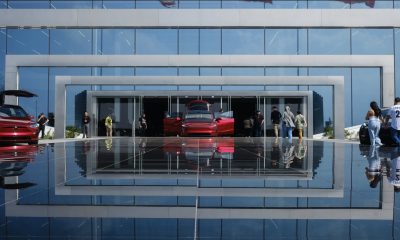
 Elon Musk2 weeks ago
Elon Musk2 weeks agoTesla still has two major milestones on track before end of Q2

